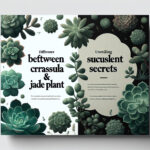Introduction
Imagine a world where every nook of your home is accentuated with the lush, emerald hues of crassula plants. These charming succulents, with their thick, jade-like leaves, have claimed their fame not just for their effortless beauty, but also for their ability to thrive with minimal fuss. They stand proudly on windowsills and desks, a testament to the versatility and appeal that nature can bring into our indoor spaces.
The allure of these decorative plants often comes with a caveat for households buzzing with curious pets and little explorers. As these green companions become a fixture in our living quarters, the question frequently surfaces—is crassula poisonous to humans? Safety becomes paramount, echoing the silent concerns of plant enthusiasts who wish only to harmoniously blend their green-thumb interests with a nurturing home environment.
Now, as you navigate through the lush foliage of information on houseplant care, remember that the path to a safe and verdant indoor oasis lies within reach. For comprehensive guidance, let our detailed exploration of succulent savviness illuminate the way.

So let us peel back the layers of mystery surrounding these green guardians of our peace and serenity. It’s not just about adorning our homes with their beauty; it’s about understanding their nature, ensuring that every leaf and stem contributes to, rather than compromises, the wellness of our domestic realms. It’s a journey of learning, of embracing the green that breathes life into our concrete existence, and of doing so with an enlightened touch of foresight and care.
Understanding Crassula Plants
Welcome to the enchanting world of Crassula, a genus belonging to the succulent family that has garnered widespread adoration among houseplant enthusiasts. These durable and picturesque plants come in a wide array of species, but the Crassula ovata—also fondly known as the Jade Plant—stands out as a household favorite. Let’s delve into the captivating world of these succulents and reveal their appeal.
Native to the rocky landscapes of South Africa and Mozambique, Crassulas have mastered the art of resilience. Even in the categorical variety of the Crassula genus, the Jade Plant’s rubbery, gleaming leaves have become iconic. With their plump foliage symbolizing wealth and prosperity, these plants are often celebrated as tokens of good fortune. It’s no surprise to find them gracing homes and offices as living decor, promising a touch of green opulence.
Their durable nature makes Crassulas an absolute joy for both seasoned green thumbs and novices in plant care. They thrive with minimal attention, asking only for sunlight’s kiss and sporadic watering to flourish. Even their growth habit is accommodating, allowing for propagation through a simple leaf or stem cutting, making it a breeze to share the bounty with fellow plant lovers.
Part of their charm lies in the variety of Crassulas available, each with its distinctive form and texture. From the imposing stature of the Jade Plant to the whimsical cascades of the Crassula muscosa, there’s a Crassula out there that beckons to be part of your indoor garden tableau.
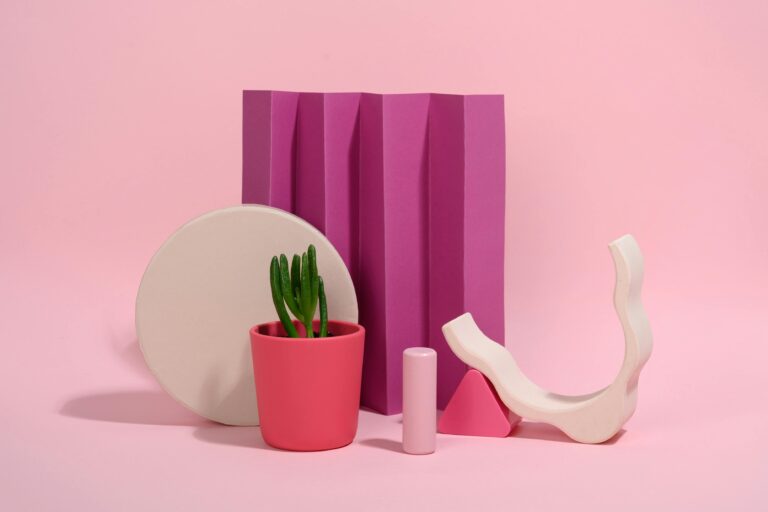
Cultivating these resilient succulents can evoke a gardener’s curiosity, prompting questions about how they can store water in their leaves or adapt to less-than-ideal conditions. Perhaps that’s why succulents, and Crassulas in particular, have captured the hearts of so many: they invite us into a story of survival and beauty.
For more insights on nurturing these gorgeous greens, consider reading our comprehensive guide on thriving Jade Plant care, revealing techniques to ensure that your Crassula plants not only survive but substantially thrive.
The Toxicity Debate: Crassula & Human Health
When it comes to the peaceful Crassula plant, often nestling quietly in homes or offices, a question arises that can cause quite a stir – is crassula poisonous to humans? While these succulents bring a touch of greenery and calm to any environment, there’s a less-discussed narrative centered around their potential toxicity. Let’s dive into the heart of this debate and unearth the truth behind the claims.

The conversation around the toxicity of Crassula plants is one rife with both scientific inquiries and anecdotal musings. Scientifically speaking, the evidence has been somewhat mixed, with studies probing into the chemical compounds found within these plants. It’s these compounds that hold the answer to whether touching or, in rare cases, ingesting parts of the plant could be a cause for concern.
Anecdotal accounts are just as varied, with some individuals reporting mild reactions after handling the plants, while others live peacefully alongside them with no complaints whatsoever. Take, for instance, Jane Doe, a seasoned gardener, who recalls developing a rash after repotting her Crassula. Conversely, John Smith, another plant enthusiast, has cultivated Crassulas for years and has never noticed any adverse effects.
The picture that emerges is one of complexity; clearly, there is no one-size-fits-all answer. However, as we parse through the evidence, it’s imperative to approach Crassula with the same caution we would afford to any houseplant – understanding its specific needs and how it interacts with our unique biology.
Recognizing The Signs of Poisoning
Imagine this: It’s a serene Sunday afternoon, and you’re at a friend’s place admiring a collection of houseplants, including the attractive Crassula variety. But, uh-oh! Little Timmy is chewing on a leaf he found on the floor. Is it a code red situation? Let’s dive into what symptoms might look like if someone ingests Crassula, and the steps you should take if you suspect poisoning.
First things first—knowing the signs is crucial. If someone nibbles on Crassula, watch out for symptoms like nausea, vomiting, or an upset stomach. Unusual fatigue or weakness can also be a telltale sign. In severe cases, there might be symptoms that mimic those of a hearty winter flu—but with no fever to point the finger at. And while Crassula isn’t the top villain in the plant world, it can cause a ruckus in the human body if ingested in large quantities.
What Should You Do?
Let’s say you suspect someone has taken a bite out of a Crassula. The first step is not to panic. Keep it chill and try to figure out how much of the plant was eaten. Next up, give that person some water to sip on—it can help dilute any irritants. However, avoid inducing vomiting unless instructed by a medical professional or a poison control center. These steps are just the starting line; get them to a healthcare provider pronto for a thorough check-up.
If you’re curious about plants and want to ensure that your green buddies are thriving safely in your home, discovering the joys of succulent care is both rewarding and important. Caring for Crassula requires attention to detail, such as knowing when to water them to ensure their vitality and—not so much—edibility.
Lastly, a visual rundown can be insightful, especially when time is a luxury you don’t have. Here’s a video that throws light on the symptoms of plant poisoning and how to react with first aid:
So, there you have it. While Crassula plants are a treat to the eyes, they could stir up unwanted trouble if ingested. Keeping plants out of reach, especially from children and pets, is the tip of the day. Happy—and safe—gardening!
Safety Measures with Crassula in Your Home
Let’s cut to the chase: your charming Crassula, also known as the Jade plant, might be the unsung hero of your household’s green corner, but is it safe for the tottering toddlers and curious pets in your life? The fact of the matter is, while Crassula plants are generally not considered deadly, they can cause a bit of a ruckus if ingested, especially by your furry friends or adventurous younglings.
First things first, it’s crucial to put your Crassula somewhere out of reach. Think of it like a game of keep-away, where your green amigo is the prize. Perhaps a high shelf or an off-limits room can become a sanctuary for your succulent. Remember that time little Timmy transformed the live room into a jungle gym? Yeah, let’s avoid a repeat where your Crassula plant becomes a chew toy.
Knowledge is power, and it’s wise to educate every member of your household about the potential risks. Explain to your kids that, just like snacks, not everything is meant to be tasted. Engage them with safe plant interactions, maybe entrust them with the (supervised) responsibility of watering the Crassula family. Let’s keep it fun, safe, and educational!
For the pets? Well, consider this: Treat your plants like another pet – each with their own special spot. Cat grass can divert your feline friend, while a chew toy might spare your Crassula from becoming a canine casualty. It’s about creating a pet-friendly ecosystem within your home.
And what if someone does take a nibble of your Crassula? Keep emergency numbers handy, like your local poison control center or vet. Rapid response is critical, and while we hope it never gets to that point, it’s better safe than sorry!
For a deeper dive into Crassula plant care, the people over at World of Succulents have got you covered with all the green-thumbed wisdom you could hope for.
So there you have it, transforming your habitat with hanging baskets or terrariums isn’t just trendy, it’s a savvy move to keep your bewitching botanicals and beloved bipeds and quadrupeds from an undesirable encounter. Remember, with a little foresight and some tactical placement, you and your verdant companions can live together in perfect harmony.
Alternatives to Crassula for the Safety-Conscious
For those who adore houseplants but are concerned about the potential health risks associated with Crassula, fear not! Several fantastic, non-toxic alternatives offer the same aesthetic appeal without putting your well-being on the line. Let’s explore some verdant friends that will keep your home green and your mind at ease.
One popular choice is the Spider Plant, known for its air-purifying capabilities and extreme hardiness. Real-life Spider Plant aficionados rave about its ability to thrive with minimal care, making it an excellent candidate for both gardening newbies and seasoned plant enthusiasts. Plus, its charming spiderettes hanging down from the mother plant create a dazzling display.
If you’re seeking lush foliage, the Bamboo Palm is a must-have. This elegant plant not only spruces up your living space but also does wonders for indoor air quality. It’s a true hero when it comes to filtering out toxins. Imagine coming home after a long day and being greeted by the serene presence of a Bamboo Palm—now that’s peace of mind!
For those who love a touch of color without the worry, the African Violet is a perfect pick. Its vibrant purple blossoms can brighten up any corner effortlessly. Did you know that African Violets have been the go-to plant for a burst of color in NASA’s space stations? Yes, these beauties have even conquered outer space, proving that you can bring celestial charm into your home safely and stylishly.
Finally, the lush Peperomia boasts a wide variety of shapes and shades and is safe for a household with curious pets or little ones. Its eye-catching foliage has captured the hearts of many, and it’s renowned for being easy-going—even if you forget to water it occasionally, it won’t hold a grudge. It’s the forgiving friend we all wish we had in our busy lives.
In summary, there’s an entire green world out there waiting to be part of your safe and stylish indoor oasis. From the air-cleaning prowess of the Spider Plant to the ever-forgiving Peperomia, non-toxic houseplants not only ensure a health-conscious environment but also offer a chance to express your personality through nature’s own art. Dive into the botanical beauty that awaits, worry-free!
Final Thoughts on Crassula and Health Precautions
When it comes to your leafy companions, Crassula species, commonly known as Jade plants, are often prized for their lush, enduring beauty. However, the question lingers – is crassula poisonous to humans? Let’s cut through the greenery and get to the root of this botanical query.
Firstly, it’s key to acknowledge that Crassula plants do contain compounds that can be toxic when ingested. This doesn’t mean you need to evict these green friends from your home, but it’s wise to practice a bit of plant parenting caution. For instance, if you have curious pets or children who might think the leaves are a free-for-the-taking salad bar, it’s best to keep your Crassula out of their reach.
In reality, cases of Crassula poisoning are rare and often result from an adventurous bite or two. Symptoms might include nausea, vomiting, or diarrhea — not exactly the plant’s fault, considering we’re the species known for eating things we probably shouldn’t. Jokes aside, if someone does manage to nibble on your Jade plant, it’s sensible to consult with medical professionals or a poison control center.
That being said, Crassula plants are largely enjoyed safely worldwide, adding splashes of green serenity to homes and offices alike. To maximize enjoyment while minimizing risk, handle your Jade plant with care during pruning or repotting to prevent any sap from irritating your skin or eyes. And remember, washing hands post-plant-pampering is a garden-variety habit worth cultivating.
Bringing the outdoors inside has its bundle of benefits, such as improved air quality and a touch of nature’s therapy. With a bit of informed plant placement and mindful maintenance, your Crassula can coexist with you and your loved ones in perfect harmony. Embrace the verdant vitality, and let the calming presence of plants bolster your indoor oasis, knowing you’re clued-in on the cautions.
Frequently Asked Questions

Ever wondered if those succulent Crassula plants you’ve been nurturing could be a hidden foe to your health? Let’s dive into some frequently asked questions to separate fact from fiction. Remember, information is power, so let’s get empowered!
Is Crassula Poisonous to Humans?
Luckily, Crassula, commonly known as Jade plants, is typically not toxic to humans. However, it’s always good practice to wash your hands after handling any plant to prevent any unintentional transfer of irritants. And let’s not turn these green buddies into a salad, okay?
Can Touching Crassula Cause Skin Irritation?
Most people can touch Crassula without any worries. But just like any plant, they might cause minor skin irritation for those with sensitive skin or allergies. If you notice a rash after getting up-close and personal with a Crassula, it’s probably best to admire its beauty from a distance next time.
What Should I Do if I’ve Ingested Crassula?
No need to sound the alarms just yet! If you or someone else has accidentally ingested a bit of Crassula, odds are you’ll be just fine. These plants aren’t known to be hazardous. However, if you’re feeling unwell or if a large amount was consumed, it’s wise to consult a healthcare professional.
Are Crassula Plants Safe Around Children?
Crassula plants are generally considered safe around children, but it’s always best to keep an eye on the little explorers. Kids have a knack for tasting everything in sight, so teach them to look, not lick, when it comes to houseplants. And hey, while you’re at it, why not turn it into a fun learning moment about plant care?
What Precautions Should I Take With Crassula In My Home?
Simple steps can ensure a safe cohabitation with your leafy friends. Keep Crassula plants out of reach if pets or toddlers are around—they don’t know any better, after all. And when it’s time for a trim, use gloves to prevent any potential skin irritation. Otherwise, these resilient succulents are a delightful, low-maintenance addition to your home.

